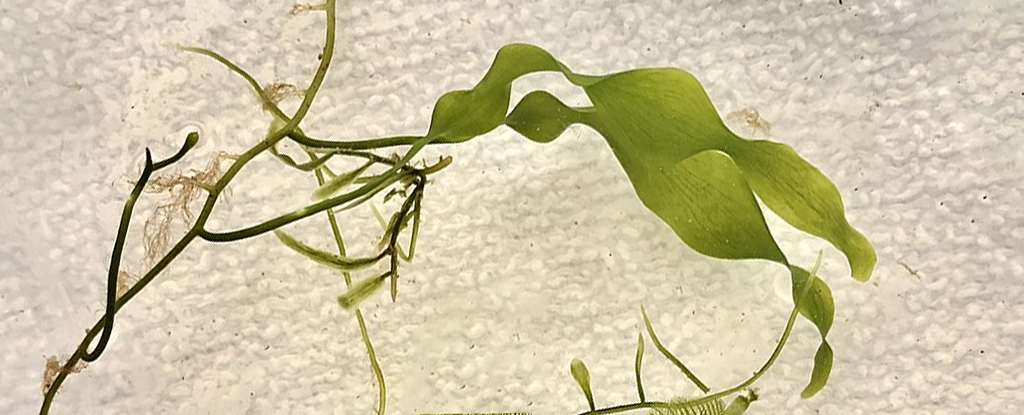Plants, animals, and many fungi typically grow through a binary process Nuclear fissionA form of asexual reproduction that allows a cell to divide, reproduce, and produce new cells that specialize in certain activities.
However, not all macroorganisms play by the rule book. A number of large seaweeds, such as leafy green algae culerpalack microscopic dividing structures, making them among the largest single-cell systems known.
These plant relatives are still able to grow meters in sizeThey are very adept at devouring sunlight to expand, and have become successful invaders in many new territories.
But what regulates the growth process when the body is actually one giant cell?
To find out, Caltech bioengineer Eldad Afek and his colleagues cut off parts of this species Brachialis Kohler To see how it grew again.
“The main paradigm in cell biology is that the internal environment of a cell is dictated by its environment and what happens in the nucleus.” He says Afik.
“But in culerpaThere is nothing separating the cores from each other.”
Even without membranes and walls to divide the plant’s many nuclei, this interesting organism is still able to organize itself into organ-like structures that resemble leaves, stems, and roots.
After cutting off sections of the algae, the researchers observed differences in the intensity of green pigmentation at the sites of their regeneration. At night, these spots were relatively transparent, while during the day they became a solid, opaque green.
border-frame=”0″ allow=”accelerometer; autoplay; write to clipboard; encrypted media; gyroscope; picture-in-picture; web-sharing”allowfullscreen>
Previous search He suggests that this color change could be the result of sunlight-processed chlorophyll moving in and out of the site. Avik and his team determined whether the movement of chlorophyll was in fact a response to light.
Detection of samples from C. brachialis To 12 hours of bright light followed by 12 hours of darkness, the researchers found that algae leaves grew longer than those in specimens exposed to bright light for 24 continuous hours, suggesting that a night of “sleep” is necessary to maintain their self-regulation.
When bathed in light, parts of culerpa The body was bathed in a green wave of chlorophyll that allowed it to photosynthesise and grow. At night, this green wave appeared to be crashing, and the algae rested during it.
But what was really interesting was that the algae seemed to predict when dusk and dawn would arrive. Chlorophyll activity has changed before New lighting conditions have even arrived, suggesting that the algae have a kind of internal biological clock that they use to grow and develop.
“We found distinct morphologies based on temporal patterns of light, suggesting that chlorophyll waves can link biological oscillators to metabolism and morphology,” the researchers say. explained in their paper.
As green chloroplasts spread according to the cycle of day and night, they provide the giant dot with not only a sense of time, but also of location.
This gives the algae the equivalent of knowing its head from its ass, allowing it to determine when and where to grow. No “cells” needed.
This research was published in Nature Communications.












































